I would like to introduce this fit of “bravery” by coining an introduction from a document published by the International Energy Agency.
Energy is critical to global prosperity, as it underpins economic growth, social development, and poverty reduction. It has fuelled global economic development since the industrial revolution, and countries aspire to further inclusive economic growth.
However, with more than 80% of global energy sourced from fossil fuels, growing energy demand has led to increasing greenhouse gas emissions. Today’s challenge is to decouple economic growth and social development from increasing emissions.
I might even add that in order for the world to curb on the continues growth of carbon emissions, we must dare to try new inventions and explore technologies that defy the norm and challenge convention.
This–I believe is what the Solar Impulse Project aims to achieve with its around-the-world flight.
Solar Impulse is a Swiss long-range solar-powered aircraft led by Swiss psychiatrist and aeronaut Bertrand Piccard, who co-piloted the first balloon to circle the world non-stop, and Swiss businessman André Borschberg.
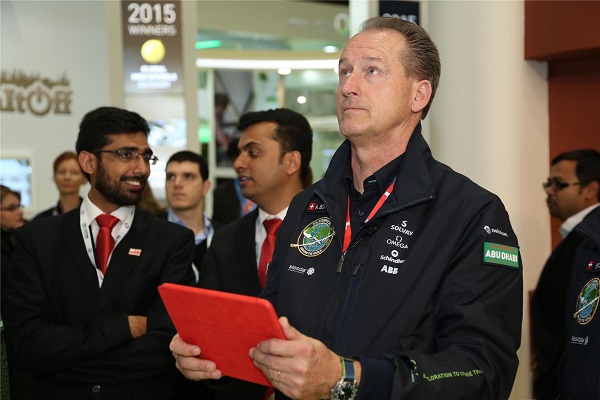 André Borschberg, a co-founder and pilot of Solar Impulse, tries out a flight simulator at the ABB stand at the World Future Energy Summit in Abu Dhabi in January 2015. Image Credit: ABB
André Borschberg, a co-founder and pilot of Solar Impulse, tries out a flight simulator at the ABB stand at the World Future Energy Summit in Abu Dhabi in January 2015. Image Credit: ABB
This privately financed project hopes to achieve the first circumnavigation of the Earth from Abu Dhabi by a piloted fixed-wing aircraft using only solar power.
YES! Solar Energy.
The entire journey will feel like a long drive in a family car, since the aircraft weighs the same as a Volvo sedan and goes at comparable speeds.
A fun fact to note is that the cockpit feels only slightly larger than an average car and contain the life support systems, food, oxygen supplies and the reclining pilot’s seat that triples as bed, chair and toilet.
They are using the Solar Impulse 2 which has as top speed 87m/h (140km/h) but the pilots will conserve battery power by limiting the plane to roughly half that.
The plane will fly both day and night, carrying no fuel, powered by 17,000 solar panels set on its wings (which are wider than a Boeing 747’s) and fuselage.
A 633kg bank of lithium batteries, around a quarter of the entire weight, will store the energy to run the motors overnight.
“Last year, we had a very good exercise. We went around the world virtually, but with actual conditions,” explained Raymond Clerc, mission director.
“For the Pacific crossing, it was an easy decision. We had a very good window on 2 May. But when we were on the East Coast of the USA, we had to look to cross the Atlantic and we had to wait 30 days to find a good window. And then it was easy – 3.5 days and we were in Seville, (Spain),” he told BBC News.
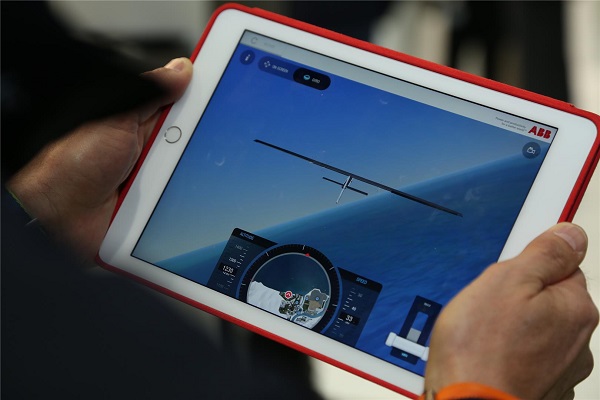 ABB’s flight simulator presented at the World Future Energy Summit in Abu Dhabi in January 2015. Image Credit: ABB
ABB’s flight simulator presented at the World Future Energy Summit in Abu Dhabi in January 2015. Image Credit: ABB
The Guardian reported that the pilots will endure roughly 250 hours each inside the narrow cockpit with no oxygen or temperature control for the total flight duration. Temperatures outside will range between -40C to 40C.
They will be able to take only 20-minute naps every two to four hours as falling asleep for long periods will be impossible as the flight will need constant attention.
The pilots will practice yoga to stave off the physical discomfort of remaining confined to a seat for days at a time. But Borschberg said the biggest challenge was maintaining concentration.
Piccard, who is a psychiatrist as well as being part of the team that in 1999 first circumnavigated the globe non-stop by balloon, has taught himself and Borschberg techniques of self-hypnosis and meditation in order to maintain concentration.
“Time is not so important anymore,” Borschberg told The Guardian.
“You have plenty of time and the only way to cope with this duration is to be in the present moment. If you start thinking about how many hours left until you get to the destination you get crazy. So the only way is to be present … In some ways it’s almost a spiritual experience that we are going through.”
As I write this article, the BBC reports that the record-breaking attempt has completed its first leg with an arrival in Oman at 16:14 GMT after a 12-hour flight.
There is no doubt that this trip is very ambitious and could lay down the blueprint for solar powered passenger planes in the near future. But for now, we can content ourselves with one huge publicity stunt for solar power–which is in fact very welcome.
I will keep up with this story as it develops and provide updates as they break…so check back soon for details. You can follow the flight’s progress through the Solar Impulse Beta website by clicking here.




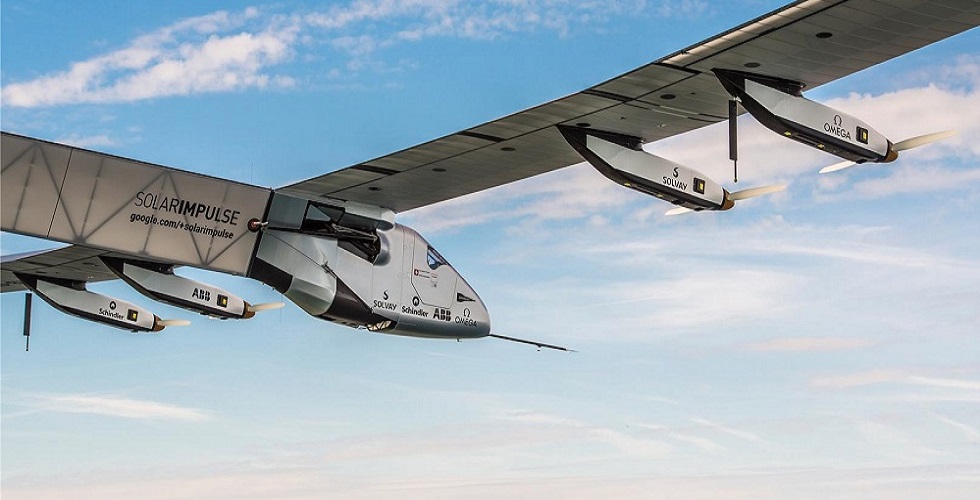
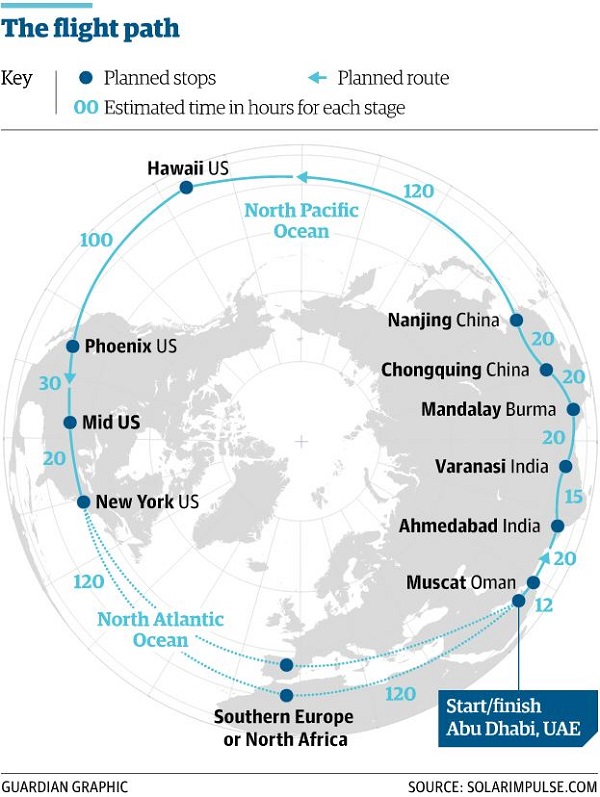
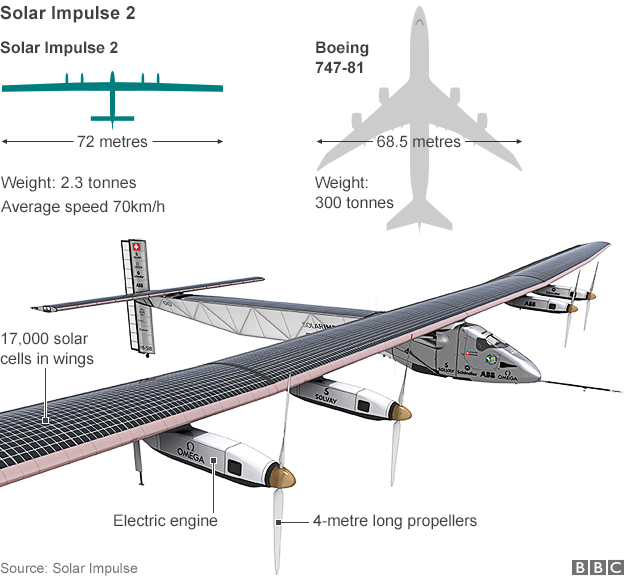
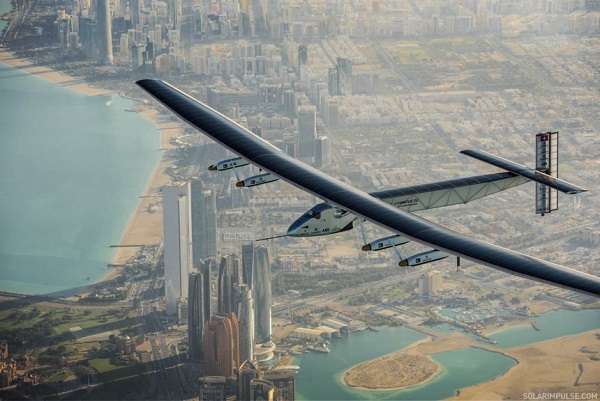
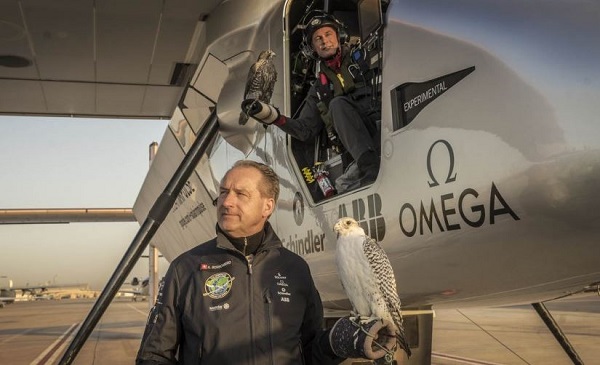






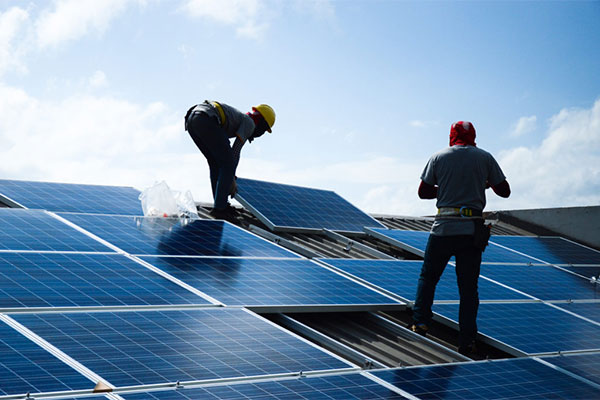




The solar airplane Solar Impluse 2 is an evolution of the original Solar Impluse, with improvements, both in terms of design and materials used. For example, it is using electrolytes that improve the energy density of its batteries and carbon fibers for light weight construction. The main target of the project is to show the importance of the use of solar energy and renewable forms of energy to protect the environment and the restriction of the energy dependence from fossil fuels. Good luck!